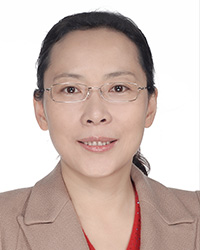Liming LI




Liming LI
Dr. Liming Li received her PhD degree in biomedical engineering from Chinese Academy of Medical Sciences & Peking Union Medical College in 1998. Since April 1998, Dr. Li had been a Postdoctoral Fellow of the Japan Society for the Promotion of Sciences (JSPS) at Kyushu Institute of Technology, Japan, and a foreigner scientist at the University of Tokyo. From 2007-2015, she had been an associated professor in Shanghai Jiao Tong University, and has become a professor since 2016. Her research has been supported by Shanghai Pujiang Program and the National Natural Science Foundation of China. She is also a PI of the National Basic Research Program of China (973 Program). She has published over 90 peer-reviewed journal papers and conference proceedings, and four international book chapters. Her main research directions include neural engineering, neuromodulation, neural prostheses and rehabilitation of neural functions, neural mechanisms and medical application of electrical stimulation, and neural informatics.
1992-1997 Ph.D. - Department of Biomedical Engineering, Institute of Basic Medical Sciences, Chinese Academy of Medical Sciences(CAMS) & School of Basic Medicine, Peking Union Medical College (PUMC), Beijing, China
1998-2002 Postdoctoral Fellow - Department of Systems Design and Informatics, Graduate School of Computer Science and Systems Engineering, Kyushu Institute of Technology, Japan
2002-2002, Foreigner Researcher, Graduate School of Life Science and Systems Engineering, Kyushu Institute of Technology, Japan.
2003-2004, Foreigner Scientist, Graduate School of Humanities and Sociology, The University of Tokyo, Japan.
2005-2006, Foreigner Researcher, Graduate School of Life Science and Systems Engineering, Kyushu Institute of Technology, Japan.
2006-2007, Research Associate, Department of Biomedical Engineering, School of Life Sciences and Biotechnology, Shanghai Jiao Tong University, China.
2007-2011, Associate Professor, Department of Biomedical Engineering, School of Life Sciences and Biotechnology, Shanghai Jiao Tong University, China.
2011-2015, Associate Professor, School of Biomedical Engineering, Shanghai Jiao Tong University, China.
2016-Present, Professor, School of Biomedical Engineering, Shanghai Jiao Tong University, China.
Neural Engineering
Neuromodulation
Neural Prostheses and Rehabilitation
Visual Electrophysiology, Optical Imaging, and Neuroinformatics
Biomedical Signal Processing
Shanghai Pu Jiang Program (2007)
Excellent Doctoral Dissertation Award (1997), Chinese Academy of Medical Sciences (CAMS) & Peking Union Medical College (PUMC), China.
Guest Editor, Frontiers in Neuroscience (2020-present)
1. NSFC Program (PI: Li LM, No.: 61971280)
Study on the effect and mechanism of transcornea electrical stimulation on cortical plasticity after blindness
2. NSFC Program (PI: Li LM, No.: 61671300)
Selective modulation and mechanisms of retinal neurons in response to current steering stimulation
3. NSFC Program (PI: Li LM, No.: 61171174)
Generation, modulation and mechanism of virtual channel of optic nerve stimulation
4. NSFC Program (PI: Li LM, No.: 60971102)
The experimental and simulation study of selective electrical stimulation of the optic nerve
5. Shanghai Pu Jiang Program (PI: Li LM, No.: 07pj14050)
Spatiotemporal properties of retinal ganglion cells in response to optic nerve electrical stimulation
6. 973 Program (Director: Ren QS; PI: Li LM, No.: 2011CB707502)
The mechanism study of interaction between the micro-electrode array and visual system
7. 973 Program (Director: Ren QS; PI: Li LM, No.: 2005CB724302)
The mechanism study of interaction between the micro-electrode array and visual system